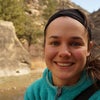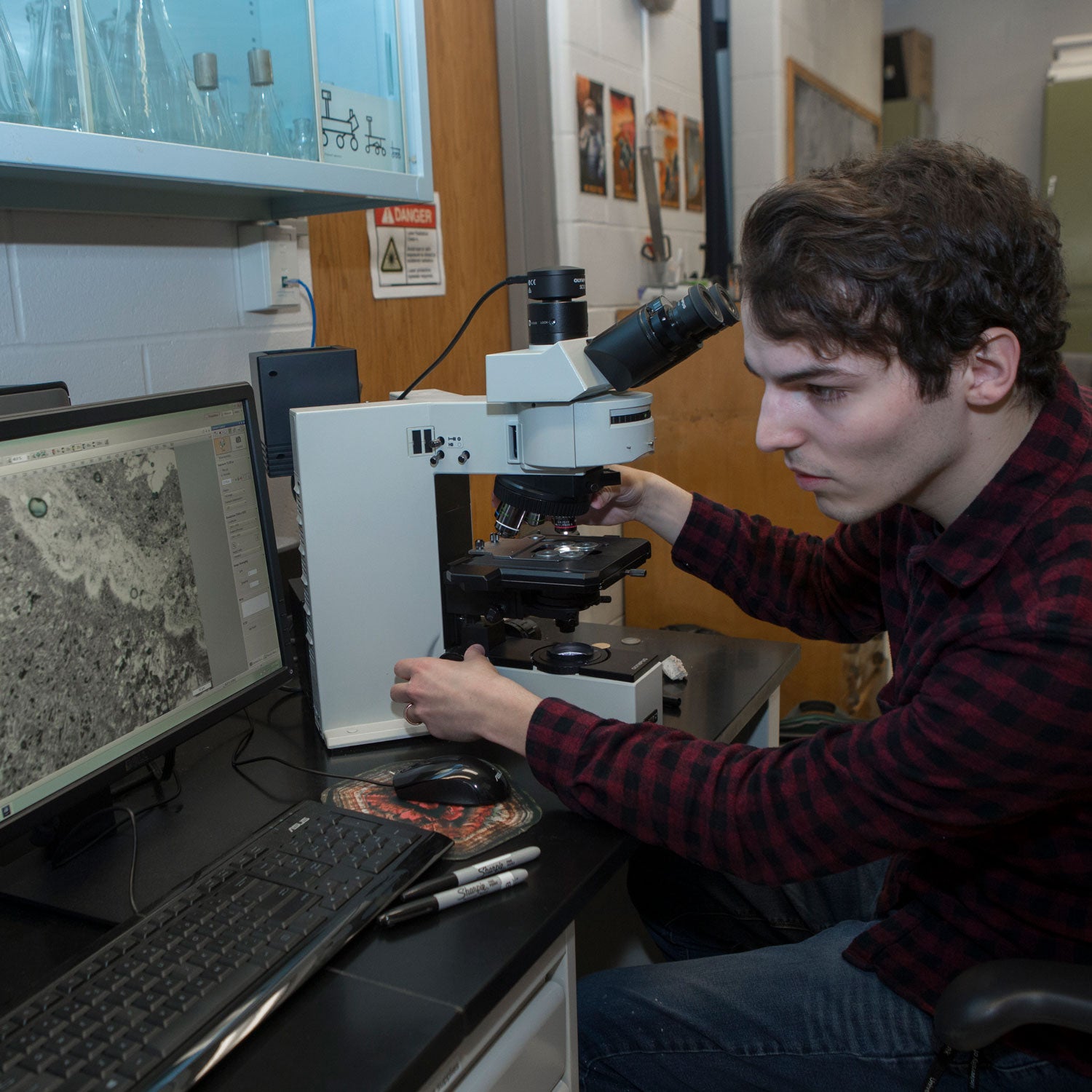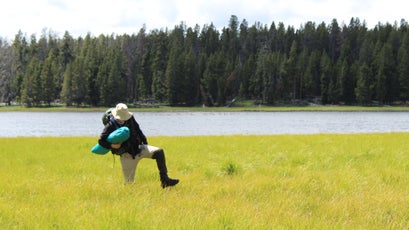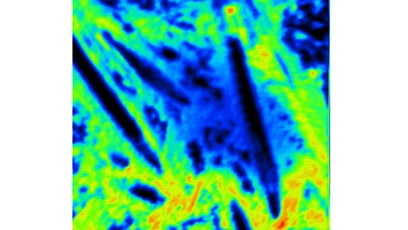Yellowstone’s backcountry is no place for the casual hiker or tourist. These geologically active lands feature deep mud, boiling water, bison, and wolves. The air isn’t safe to breathe for long periods of time, either; the chemicals wafting from the bogs and bubbling waters rob lungs of oxygen and can cause fatigue and even asphyxiation. But for Andrew Gangidine, a geologist with the University of Cincinnati, these are small costs to solve some of life’s biggest mysteries.
“We’re trying to answer age-old questions of ‘are we alone in the universe?’ and ‘how did we get here?’” Gangidine says. “Until now, we haven’t had the technology or means to answer it.”
Many scientists think the park’s hot springs are a great natural laboratory to start looking, since they closely resemble the chemical soup that may have fueled the earliest life on Earth at least 3.5 billion years ago. The hot water thwarts multicellular life, so the resident bacteria have few competitors and little need to evolve. As a result, the hot-spring microbes and their fossils are similar to ancient bacteria. In Yellowstone, Gangidine is studying those microbial fossils to find biosignatures, elements that show evidence of past life because organisms consume or excrete them or otherwise interact with them. And that work could help us find signs of life on other planets.
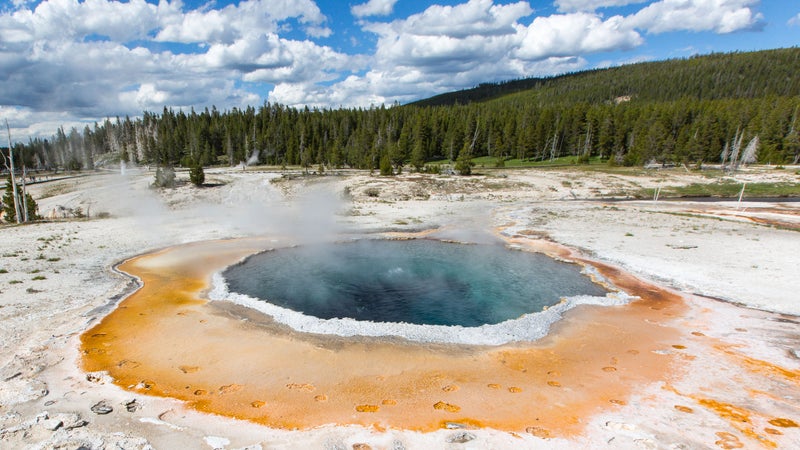
In 2007, one of the Spirit rover’s wheels got stuck during its patrol and inadvertently set Gangidine’s research sights on Mars. As the rover trudged forward, the wheel carved through the planet’s red dust until a white sediment appeared. This, it turns out, was an —the same type of deposit that coats the hot springs in Yellowstone. Gangidine hopes to find a signature of life in Earth’s hot springs that scientists could look for in samples collected in the next Mars rover mission, which is planned for 2020. If scientists find such a signature in those samples, it could be a sign that Mars once hosted life.
Gangidine and his team routinely travel to Yellowstone to trek into the park’s hydrothermal fields—grassy plains pocketed with gassy geologic features—and collect samples. They take water samples and scrape silica from the white crust that circles the hot springs. But the hikes to and from their field sites are not without obstacles.
Once, in summer 2017, wolves chased a herd of bison into the fields, and the herd parked itself right in the scientists’ return path. So, to avoid disturbing the bison, which are , the team had to take an alternative route through the park’s bogs, where tall grasses obscure unstable soil. At one point, Gangidine’s foot plunged through the ground into thigh-deep mud; his last step had been on firm ground.
“Luckily, it didn’t burn me,” Gangidine says. “That shows how fast the ground can change out there. If I were by myself, I don’t know if I could have been able to get out of it.”
The scientists are careful not to spend more than three days sampling at a time. Any more time and the prolonged exposure to toxic gases makes them too tired to conduct field work. Some of the soils at the sites are also high in arsenic, which burns clothing. “You’ll take a knee to pick something up off the ground,” Gangidine says, “and then later that day there are holes in the knees [of your pants].”
Gangidine brings the samples back to the lab, where he prepares them into very thin slices and examines them under a microscope for bacterial fossils, most of which look like thin filaments. He identifies the kinds and locations of different elements present in samples, with the goal of finding several promising ones that are consistently present in or near the fossils. If life existed on Mars, it was likely around 4 billion years ago, when water flowed on the planet’s surface—so finding fossils would require tracking down elements that survive time and weathering, just like they have in Yellowstone.
A biosignature is hard to identify conclusively, since just one element or feature doesn’t necessarily indicate life. If Gangidine can identify a menu of elements that have persisted through time, “we have another line of investigation to test when it comes to proving if a fossil really is a fossil,” says Tara Djokic, an astrobiologist at the University of New South Wales, Australia, who was not involved in the research project.
In two years of researching at Yellowstone, Gangidine has noticed a few interesting elemental signatures, like iron and manganese. He also found gallium, an element not usually associated with life, around the outside of fossils. “Gallium is surrounding these fossils, and we don’t know of another way to explain that other than life is doing it,” he says. To put these elements to the test, this summer Gangidine plans to visit an ancient, extinct hot spring in western Australia that contains the remains of 3.5 billion-year-old microbes. The Yellowstone fossils, in contrast, are only about 14,000 years old. If an element persists between fossils at the two sites, it would make a good biosignature because it can survive billions of years.
Life or no life, the scientists are excited by this research. For Jeff Havig, a geochemist with the University of Minnesota and collaborator on Gangidine’s project, it builds a foundation for future research by uncovering details about the lives and metabolisms of microbes: “There are a lot of mysteries in the rock record that we don’t understand—we’re helping push back our boundaries of ignorance.”

